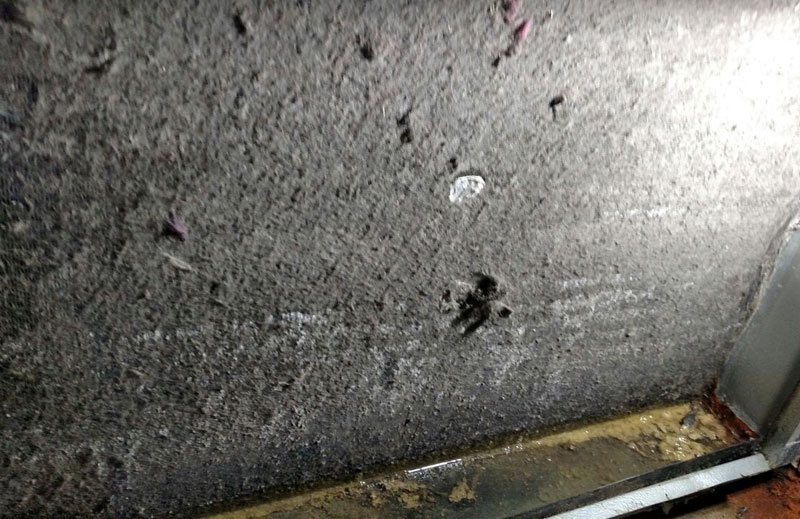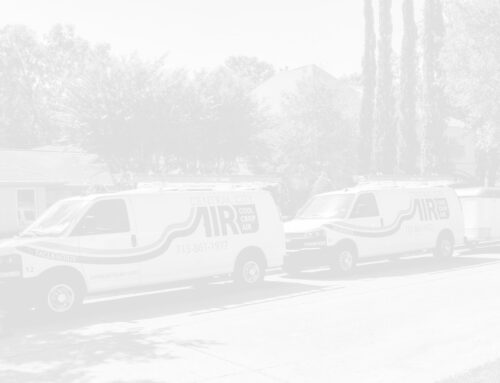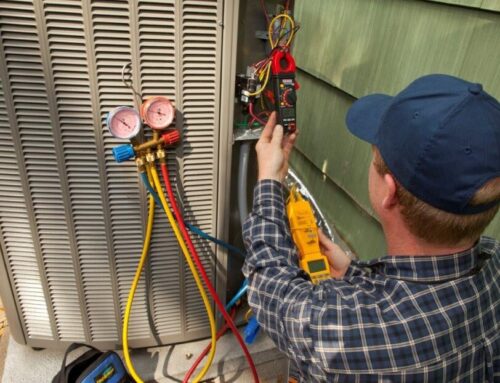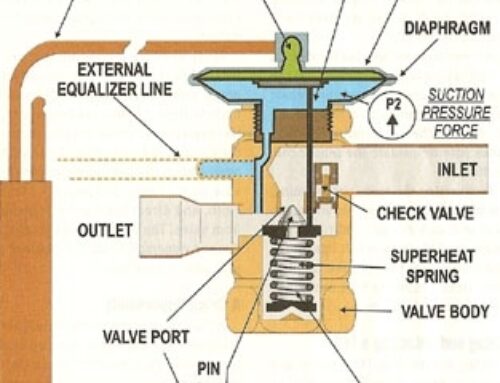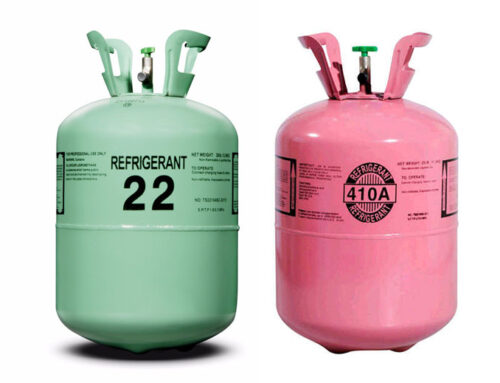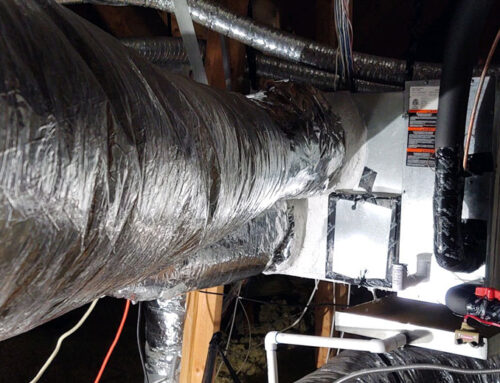Coil Cleaning: Myths and Misrepresentation
From Contracting Business by William M. Dillard and Justin S. Salmon
When you discover severely restricted air flow through a coil during normal service, it may be time to suggest a replacement, since attempting to clean such a coil may only make matters worse.
Let’s get cooling coils into perspective before we get into the issues surrounding cleaning them. First, let’s assume we have 1 sq.ft. of 6-in. thick coil surface @12 fins/in. The coil area handles 500 FPM and the building load is 1 CFM/sq.ft. (a good rule of thumb for southern climates). With these conditions the following approximations hold true:
-
Every cubic foot of air in a building goes through the coil 60 times in a 10-hour day.
-
Any point you pick on the coil’s internal fin surfaces sees 300,000 linear feet of air go past in one day.
-
For every square foot of floor area, there ‘s .25 to .33 sq.ft. of coil area.
-
If the floor is cleaned twice a week and the coil once a year, there’s 100 times more attention paid to floors than to coils.
-
Most floors are dry 99.9% of the time; most coils are wet an estimated 90% of the time.
-
In wet conditions it takes 24 to 32 hours for most mold spores to germinate.
-
The human respiratory system is less able to deal with airborne contaminants than the digestive system is to deal with swallowed contaminants. (Trust us, we checked!) Try to convince someone to lick one of those coils! And yet we continue to breathe the air that passes through them without a thought.
-
The fan wheel delivering the air to the coil rotates 600,000 times per 10-hour day.
-
Air moving through the cabinet of the coil is traveling at roughly 5.6 MPH.
-
But, air traveling through the supply side of the duct system is traveling roughly 17 MPH.
-
Assuming average filtration and particulate load, the total load of debris handled by a commercial HVAC system in one day of operation is significant.
Based on these rough facts it’s pretty obvious that cooling coils get far less attention than the typical commercial office carpet, yet these systems are exposed to huge amounts of dirt and debris, even with decent filters.
A Case Study
We’ve long touted the benefits of coil cleaning to our customers. It’s only been in the last three to four years that we’ve questioned the validity of the processes we’d gone through to clean their coils, tested for results, and come up with some surprising conclusions. First let me state that we’ve tested a wide variety of coil cleaners, and for extreme cleaning, we now use an industrial pressure sprayer/boiler that supplies 180F water to apply such cleaners.
In this case, our customer was getting repeated complaints from tenants that there was “black stuff coming out of the vents.” It was a recurring problem that a number of other contractors had attempted to correct.
Our Environmental Services Group re-cleaned the coils (25 sq. ft., 4 row) using 180F water and an aggressive new coil cleaner we’d been wanting to try. We had our technicians collect all the water in a 55-gal. drum, decant the mixture and strain the residue through a standard paint strainer.
The result was about 1 lb. of sludge that looks remarkably like the material that was landing on the desks of people at the end of the line served by that air handling system. Under the microscope at Grove Scientific (an Industrial Hygiene Group we partner with) we could see vibrant life in what should have been sterile sludge after being blasted with 180F water and coil cleaner. What’s the bottom-line? In cases where coils have been really neglected, it’s often far cheaper to replace them than to try to clean them.
Why? Because we simply aren’t getting coils clean with traditional coil cleaning strategies.
No matter how good the coil cleaner, no matter how good the sprayer used to apply the cleaner, what we’ve really been doing is “packing” the coil with organic and biologically active matter. The packing process occurs using the traditional cleaning methods (which include applying coil cleaner according to manufacturer’s recommendations and then using a high-pressure sprayer/boiler to wash the particulate out of the coils.
Many sources advise cleaning the coil from one side to prevent this packing but modern fin design can severely restrict the effectiveness of the pressure sprayer beyond about one inch into the coil. Better “visible” results are obtained by cleaning from both sides, but unfortunately, this often packs the particulate further into the coil interior causing an increase in the air pressure drop through the coil.
How do we know? We simply use basic National Environmental Balancing Bureau nebb test and balance procedures to measure air pressure drop and air volume across the coils and compare them with factory conditions. In coils that have been poorly maintained, the pressure drops consistently exceed the manufacturers ratings indicating the packed conditions we’ve confirmed by dissecting such coils.
When the material still resident in the coils is tested, it’s almost always biologically active &emdash; meaning it’s alive with multiplying organisms that live and grow in that wonderful, nutrient-rich, wet atmosphere known as the cooling coil.
That kind of research has driven us to a higher standard when attacking this problem.
In order to determine the condition of the coil, it’s necessary to measure both the pressure drop and the airflow through that coil (a dirty coil will exhibit a decrease in air volume and an increase in pressure drop). Then, a simple calculation to predict pressure drop at design air volume will complete the picture.
To illustrate this, let’s imagine a coil designed for 4,000 CFM at .4-in. wg pressure drop. Your test measurements indicate only 3,000 CFM (25% low) at .5-in. wg (25% high). Neither of these results looks too serious, but using the fan law formula:
SP2 = (CFM2)2
SP1 = (CFM1)2
where CFM2 = 4,000, SP1 = .5-in., and CFM1 = 3,000 CFM
The result is that SP2 (the static pressure that it would take to push the design air volume through the dirty coil) equals =
4,000 54,000 5 .40
3,000 5 3,000
which = .71 in., more than 1.75 times the design pressure drop.
A Time To Change
Based on the above, and our hands-on coil cleaning experience, if your calculated pressure loss for a cooling coil that’s over four rows in thickness is in excess of 1.5 to 3 times the factory ratings, it’s time to consider a coil change. Why? Simply because you’re not going to get that coil clean with presently known cleaning procedures.
You’ve reached the point where the labor cost to attempt cleaning such a coil is likely to exceed the cost of materials and labor to replace it. And, chances are your efforts to clean it will fail anyway.
What about all the claims by the producers of coil cleaning products regarding those products’ ability to clean such surfaces? We’ve removed contaminated coils, soaked them in various coil cleaners (overnight) and were still unable to remove the “packed” biological mass from the interior fin surfaces. (see the accompanying photos)
This article isn’t meant to attack coil cleaning product manufacturers, or their performance claims. Our experience merely points out that the accepted industry cleaning procedures aren’t adequate in cases where coils have been neglected. Depending on the environment that cooling coils operate in, a coil doesn’t have to be very old before it requires replacement versus standard cleaning procedures.
What We’ve Learned
What have we learned from all our research?
First, good coil cleaning procedures have to start when coils are put into operation, not two or three years down the road!
Second, in cases where the pressure drop exceeds 1.5 to 3 times the rated capacity, it’s time to estimate a coil replacement. If you complete the estimate and you’re still not sure of the economics in the cost of the fan energy required to deliver air at the new pressure drop, remember that increasing the pressure drop through the coil dramatically increases the amount of fan energy required to deliver the designed air quantities.
By suggesting a changeout when coils become impacted, you’ll be doing your customer a tremendous favor because he/she will be saving both energy and improving the indoor environment. And, after you’ve changed that coil, don’t forget to upgrade those filters &emdash; after all, that’s the primary reason you had to change the coil in the first place.
William M. Dillard is president and chief executive officer of Mechanical Services of Orlando, Inc., (MSI) Orlando, FL. The article’s co-author, Justin S. Salmon, is manager of Environmental Services. MSI is a full-service, commercial/industrial mechanical contractor specializing in Design/Build HVAC and refrigeration. They can be reached at 407/857-3510. MSI also has an Internet site at http:www.msifla.com.
Copyright © 2002 Contracting Business Magazine
Penton Media, Inc., 1300 E. 9th St., Cleveland, OH 44114; www.penton.com

